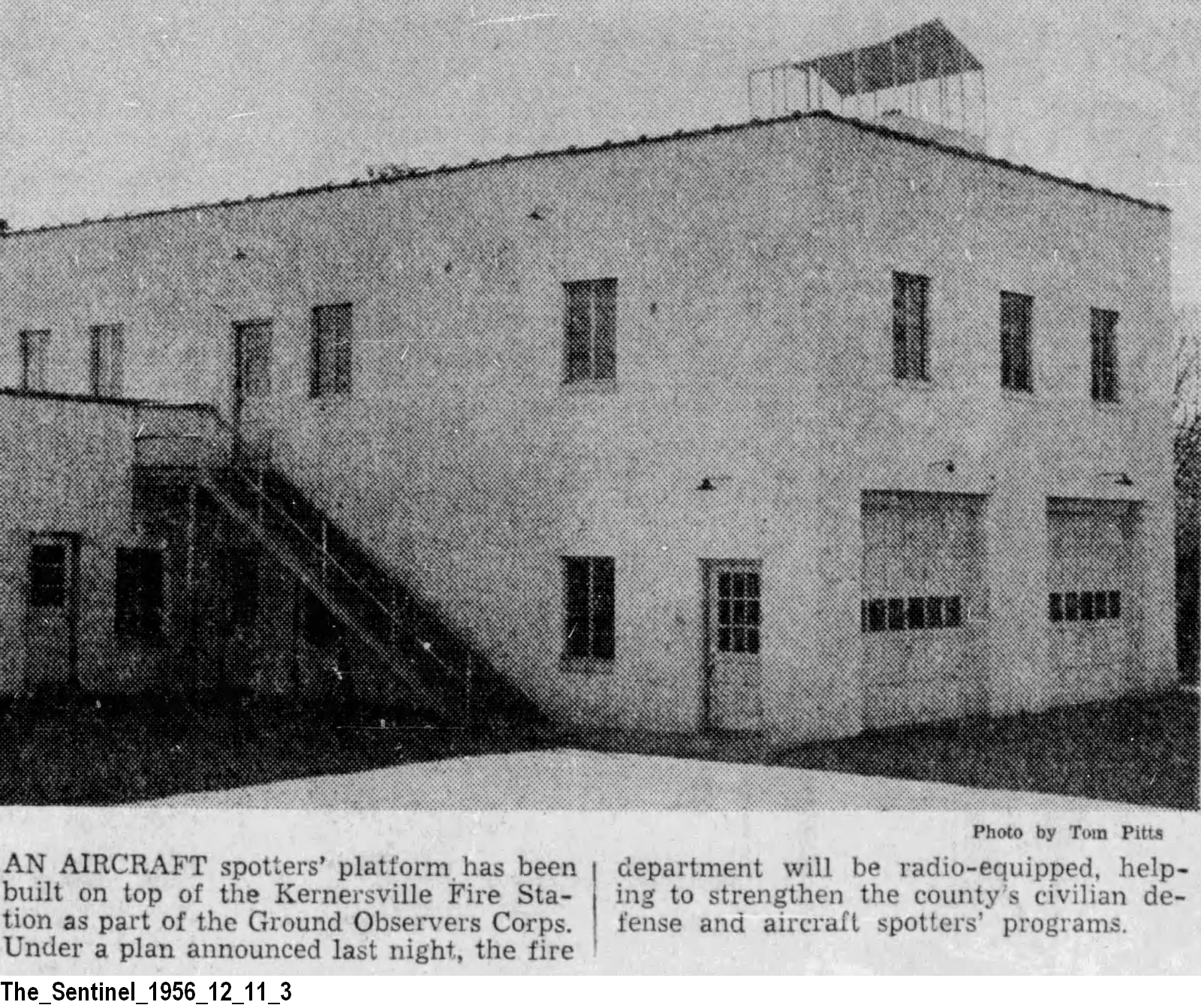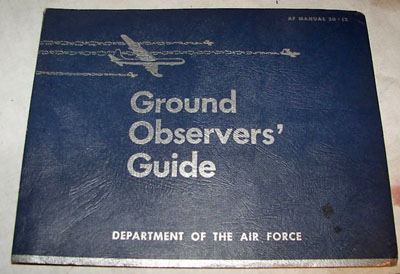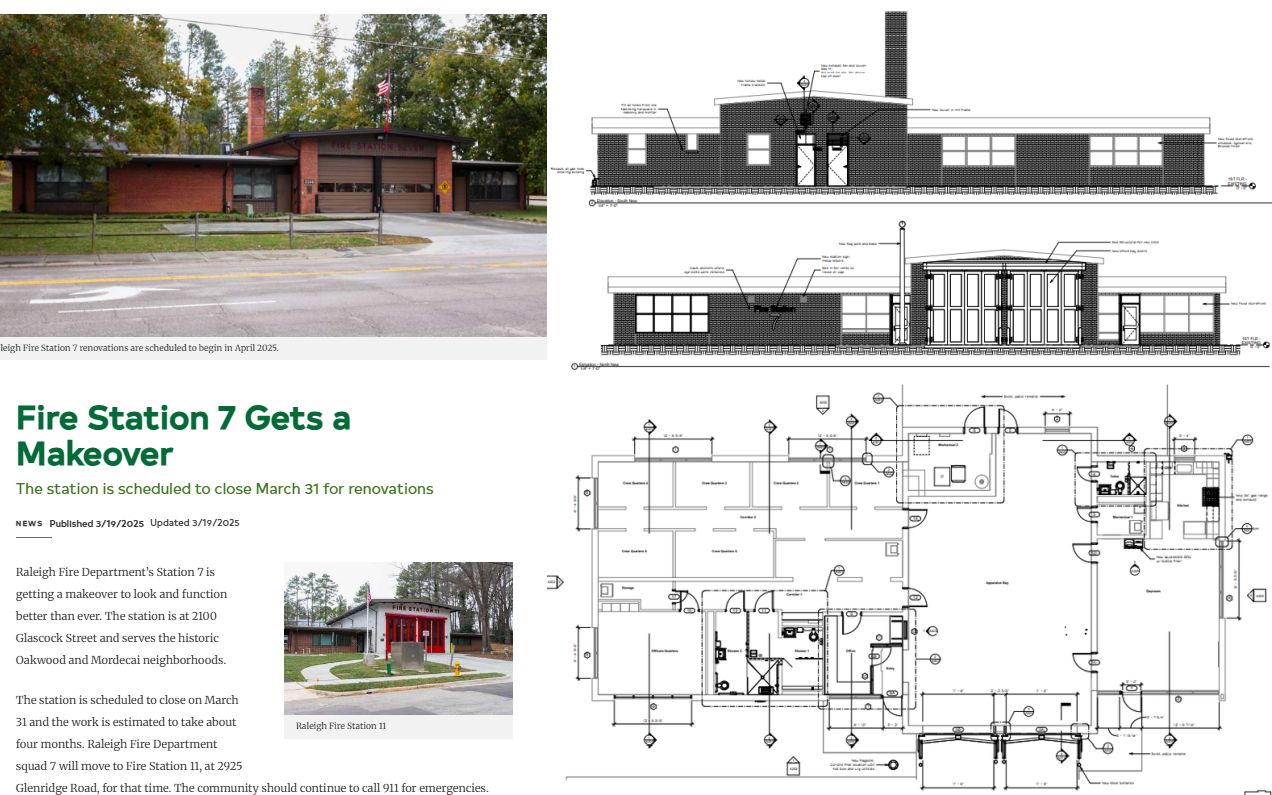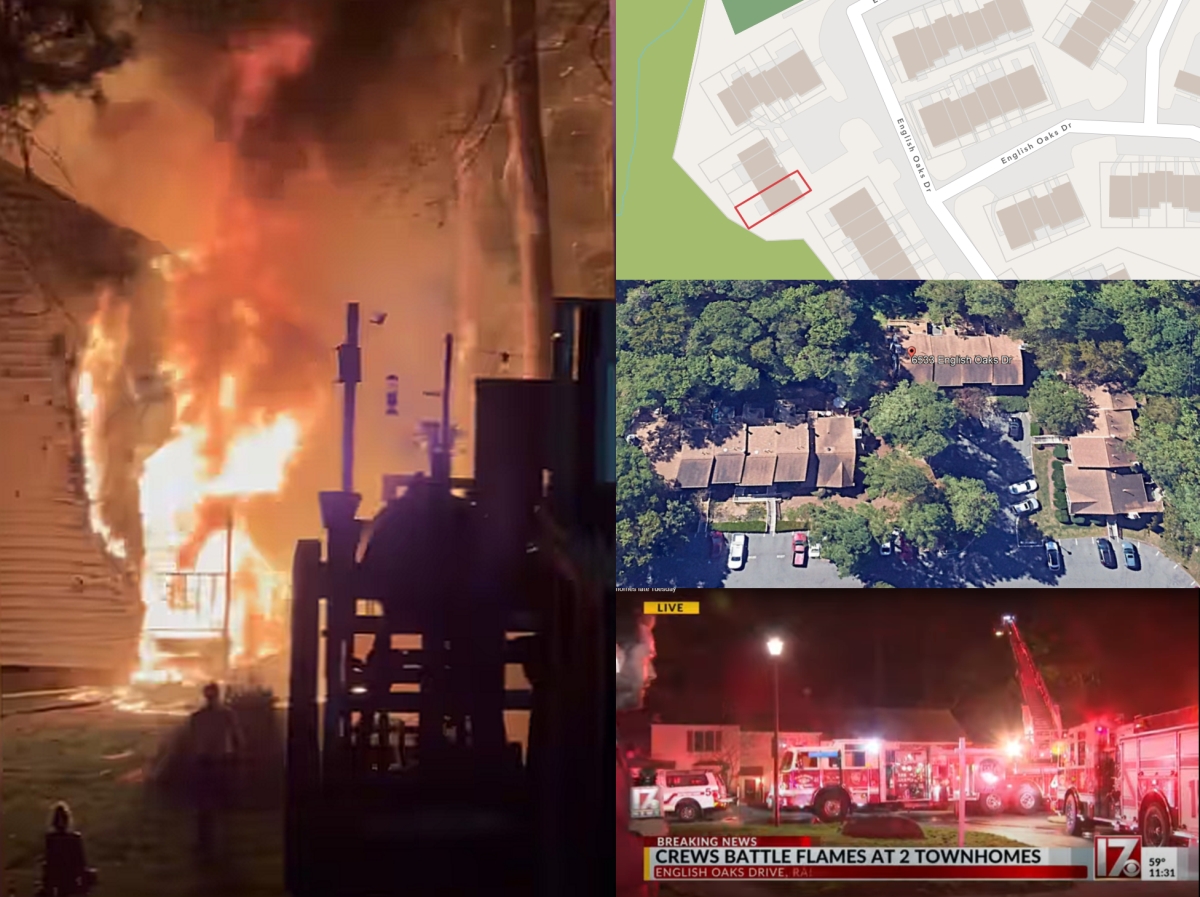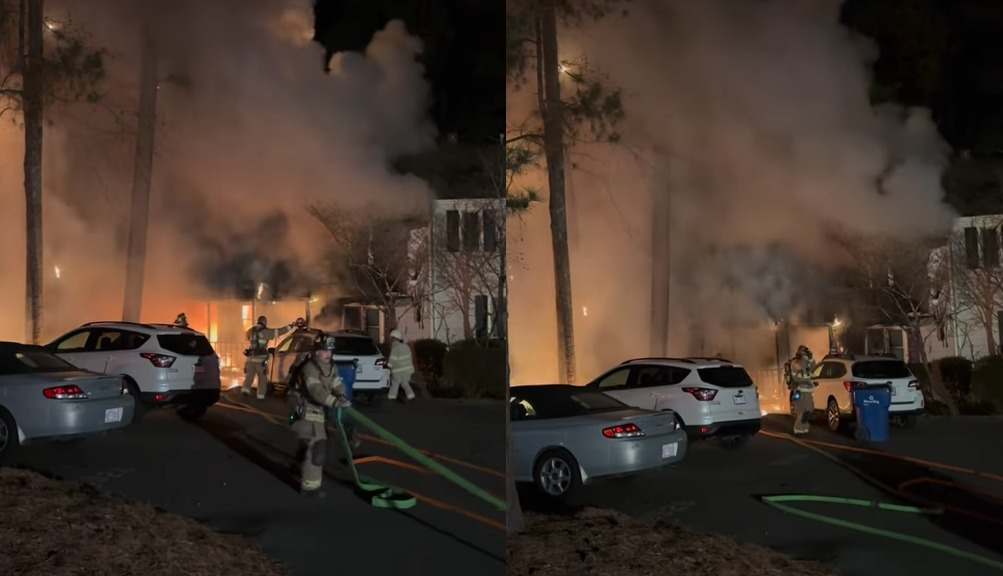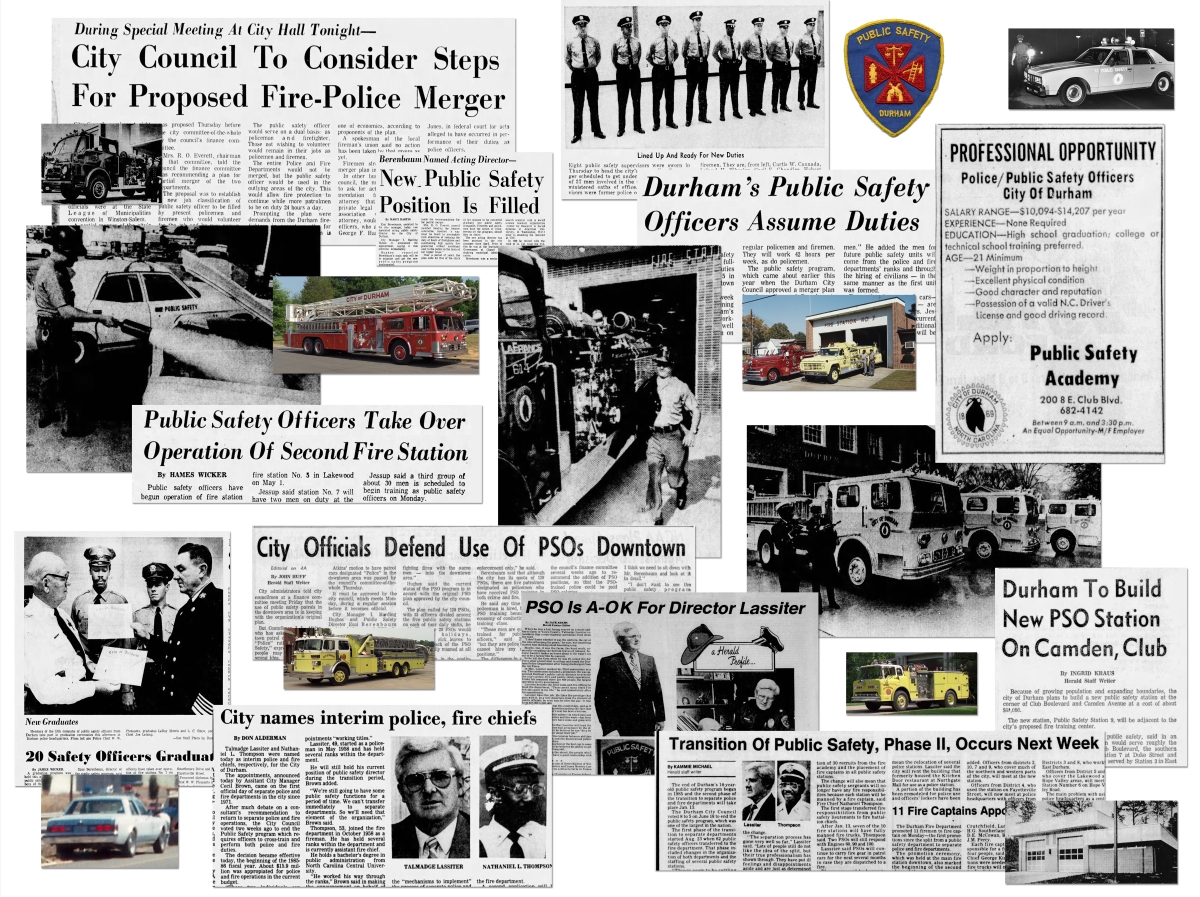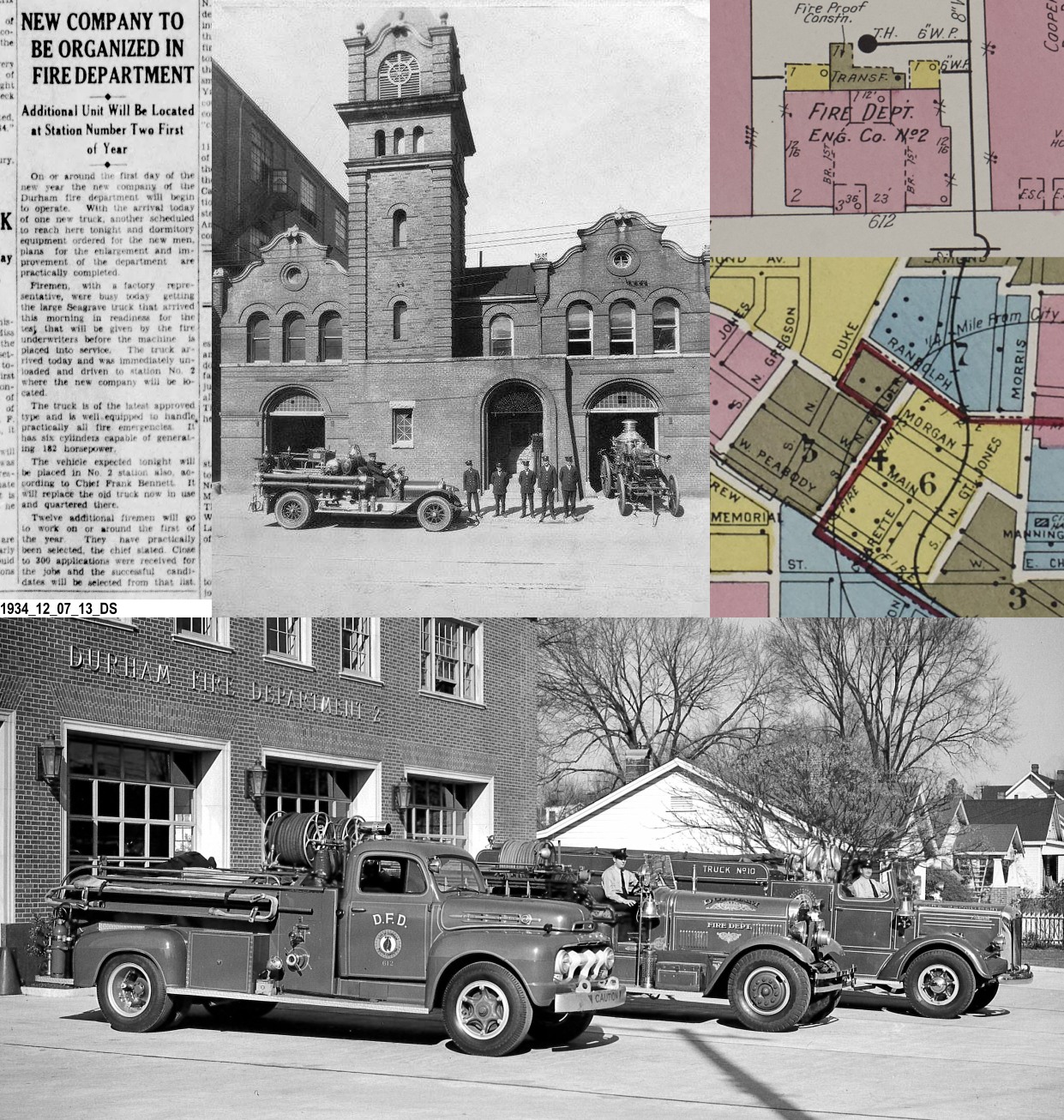
On August 27, 1998, a former tobacco factory complex in downtown Winston-Salem burned in a major fire that brought some 200 firefighters and most of the city fire department to the scene. It was battled for nearly seven hours, destroyed three large buildings, and closed a five-block area to traffic. Here are research notes on the incident, compiled from news reports and other sources.
See photos and clippings in this Google drive.
The Setting
- August 27, 1998.
- Winds 12 to 20 mph out of the north and northeast.
- Gust up to 25 or 30 mph, fanned by remnants of Hurricane Bonnie.
- High temperatures in low 90s.
- R. J. Reynolds Tobacco Company Building [Complex] No. 256.
- Complex of four former tobacco factory buildings.
- Built between 1911 and 1925 on the site of the former 1892 building and the first Reynolds plant.
- The original factory was likely demolished or incorporated into the newer buildings.
- Building #1 – Four and five-stories, 260 x 150 minus 90 x 30 courtyard.
- Building #2 – Four stories, 80 x 70
- Building #3 – Four stories, 240 x 120
- Building #4 (Albert Hall) – Four stories, 170 x 90 + 70 x 120
- Dimensions from 1957 Sanborn Maps.
- With 420,000 square-feet, computed from above.
- And 300,950 square-feet that burned.
- Newspapers reported 500,000 square-feet.
- Masonry construction with finished timber floors.
- Factory closed in 1980s.
- Property sold to county in 1990.
- County sold to JDL Castle Corporation.
- Site was being privately developed into a research park.
Building Under Renovation
- Building(s) on north end was being renovated/redeveloped.
- Middle section of complex was being demolished for a future parking garage.
- Construction underway to restore the building, one month in progress.
- Sprinkler system shut down during restoration.
- Workers discovered fire in a pile of old timbers outside a ground-floor window.
- They were redwood timbers from a cooler tower that had been removed from near the center of the building.
- Workers attempted to extinguish with five-gallon buckets of water.
- Others called for the water hose.
- Wind whipped down the brick alleys and spread the fire into the building, through the open windows.
- The 11-man crew of workers fled.
- About 60 workers were inside when the fire started.
- All evacuated safely.
First Alarm for Two Engines, Battalion Chief
- Call received 10:36 a.m.
- First alarm 10:37 a.m. for E1, E4, B1.
- Aerial 2 was several blocks away, delivering a ventilation fan to a business. They observed a large column of smoke and added themselves to the call.
- Aerial 2 first-arriving with a large rubbish fire behind the 256 building, flames extending through windowless (windows removed?) openings in the building.
- Aerial 2 officer requested second alarm.
- Second alarm 10:?? a.m. added E3, E5.
- Aerial 1 added themselves after an earlier fire alarm.
- Within nine minutes of first alarm, four engines, two aerial companies, and two command units were on scene.
- After the second alarm request, command directed an attack from Patterson Street using master streams.
Special Call for Haz-Mat
- Third alarm 10:52 a.m. added E6, E18.
- Special call 10:54 a.m. for Aerial 3.
- Special call ??:?? a.m. for Hazmat 1, due to reports of chemical and oxygen-acetylene tanks in the area.
- The oxygen-acetylene tanks were in the building for cutting steel beams. At least one explosion later occurred during the fire.
- Workers later moved barrels of chemicals out of the building, and just prior to a section of the structure collapsing.
- Crews briefly attempted an interior attack, but withdrew due to heavy fire conditions inside.
- The fire grew more intense and began moving floor to floor.
- Command withdraw all interior operations and began concentrating on exposures.
Early Timeline
- 10:36 a.m. – Call received
- 10:37 a.m. – First alarm for E1, E4, B1.
- 10:40 a.m. – E1 arrived.
- 10:40 a.m. – E5 dispatched
- 10:40 a.m. – A2 dispatched.
- 10:41 a.m. – E18 changes from cold to hot response.
- 10:42 a.m. – E18 arrived.
- ~10:42 a.m. – A2 arrived.
- 10:41 a.m. – A4 dispatched.
- 10:42 a.m. – E3 dispatched
- ~10:42 a.m. – Unit 1100 (aerial platform) requested, was returning to station from shop
- 10:44 a.m. – E3 arrived
- 10:44 a.m. – A3 dispatched.
- ~10:45 a.m. – E5 arrived.
- 10:59 a.m. – A3 arrived
Within 23 minutes, there were five engines and four ladders on scene.
Exposures
- Two other buildings were adjacent to 256.
- R. J. Reynolds Tobacco Factory #12 and Albert Hall
- Each building was connected to the fire building(s) by breezeways on each of the four/five floors.
- Crews entered Building 12 to investigate and prevent extension.
- Reaching the breezeways, crews found heavy fire encroaching. With 2 ½-inch lines, they held the fire and prevented any extension to Building 12.
- Albert Hall, to the south, housed condos and office suites. Historic building, 81 years old.
- Crews entered and encountered active fires, high heat, and smoke.
- Master streams were placed between Building 256 and Albert Hall to dampen some of the heavy fire.
Blasting Windows with Shotguns
- Thick windows hampered efforts, made from a series of glass blocks.
- Each block had two half-inch panes that were four inches apart. Each weighed about four pounds.
- Deputies used pump-action shotguns to shatter the glass blocks.
- Many of the blocks didn’t break until the third or fourth shot.
- After flames came within 50 feet of the nearby Forsyth County Jail, officials moved 732 or 744 inmates to the Joel Coliseum Annex for the afternoon.
- Alternate explanation for move, officials were concerned about inmates inhaling smoke.
- Moving the inmates took one hour and no problems were reported during the move.
- They began returning to the jail about 7:15 p.m., after the fire had been controlled.
Collapsing Walls, Wide Perimeter
- Sections of brick wall also collapsed, adding to cacophony of sounds that day.
- Building collapses started by 1:30 p.m.
- Apparatus had to be moved at times, due to the fire shifting and walls collapsing.
- Five-block area around the fire was shut down, during the entire operation.
- Fire Chief contacted the city water department for more water, but because of a miscommunication, two tank trucks were instead sent to the scene. It took two hours before water pressure was “up to speed.”
Over 200 Firefighters on Scene
- Mutual aid was requested to neighboring departments for personnel and equipment.
- Kernersville and other county FDs responded, both on scene and with city coverage. [Need run card.]
- WSFD issued department-wide call-back for all off-duty members.
- By midafternoon, some 60 of 75 on-duty firefighters had responded.
- Another 60 off-duty members and 50 or more county volunteers came to the scene.
- Other VFDs moved to cover city stations, with only three of 14 city stations remaining with WSFD crews.
- County units answered calls including a house fire elsewhere in the city, and grass fires from burning embers along Interstate 40.
- Total force on scene: 170 firefighters, 13 engines, five ladders.
- Alternate citation: 200+ city firefighters, including 120 off-duty. Also dozens of volunteer FFs.
Controlled After Seven Hours
- The fire burned for nearly eight hours.
- Flames reached 20 feet into the air.
- As walls and roofs collapsed, flames shot 100 feet into the air.
- Smoke covered most of downtown and could be seen as far away as Davidson County.
- Blowing embers sparked several grass fires along the shoulder of Interstate 40.
- Fire was controlled at 5:30 p.m.
- As night fell, they began releasing some of the crews.
- Three of the four buildings had been destroyed, but the fire had been stopped into the adjacent buildings.
- Heavy equipment including a construction crane with a metal tip was then used to topple the remain unstable walls, as well as the concrete sign over the building. Crane work started by 6:20 p.m.
- Four aerial streams also flowed through the night.
- The operating apparatus required on-scene fueling and constant checking.
- Crews were rotated and the incoming shifts manned apparatus already in operation, wetting down the debris from the day before.
Injuries and Damage
- There were a few injuries, but none that required hospitalizations.
- One firefighter was treated for heat exhaustion, others were treated for minor injuries, including one hit by falling bricks.
- “Most were fighting heat exhaustion after 10 minutes inside. The building was burning at 1300 to 1500 degrees and they were carrying 45 pounds or so of wet gear.”
- “Some were so dehydrated that their tongues cracked in the heat.” [WSJ, 8/29/98]
- Falling bricks damaged several fire trucks and nearby cars.
- Except for Albert Hall, the Building 256 complex was a total loss.
- It covered almost a city block and had a tax value of $720,000.
- Building 12 and Albert Hall were both damaged.
- Albert Hall had 16 displaced businesses—including a photo studio, a catheter manufacturer, and other medical supply companies—and 13 condo residents.
- Initially thought to be heavily damaged, Albert Hall suffered only smoke damage.
- Building 12 housed the county General Services department and was connected to the complex by a metal walkway.
- It sustained fire and water damage.
- Victoria Hall [?] was also damaged and later completely rebuilt.
- A building on the opposite side of Albert Hall housed a research center and animals used by Wake Forest University were evacuated. The building was not damaged.
Causes and Spectators
- Two stories circulated on the fire’s origin, carelessly discarded cigarette or spark from welding tool.
- The Charlotte Observer reported the latter, that works with a cutting torch ignited wooden floor materials treated with flammable polyurethane coating.
- Hundreds/thousands of spectators watched, coming from downtown offices. Others drove in to watch the fire, including former RJR employees.
- Spectators also watched from along the railroad tracks behind the buildings.
- Drivers also slowed along Interstate 40 and US 52 to watch the fire.
- Legeros was adopting a cat in Raleigh that day and had an appointment that afternoon, or he would have made the drive when he heard the incident was unfolding.
Street Closures
Closed streets were:
- First between Church and Salem
- Second between Church and Chestnut
- Third between Main and Patterson
- Chestnut between Fourth and First
- Church between Fourth and Second
- Patterson between Salem and Belews
Lingering Questions
From the Winston-Salem Journal on August 29, 1998.
Q: Why didn’t WSFD borrow a helicopter to fight the fire?
A: Said the Fire Chief, it would have needed to come from Fort Bragg, and probably would have dropped water on the wrong building(s), due to the strong winds.
Q: Why didn’t it blow up the breezeways connecting the buildings, to better prevent fire spread?
A: That was great idea but we don’t have the equipment to do that, and not like “people see on TV.”
Q: Why didn’t they put a firefighter at the top of the aerial, to direct the water spray?
A: The heat was too intense. And it already burned some of the wiring on the aerial.
Q: Why did they leave a fire burning on one building’s roof?
A: Probably because command made the decision to concentrate efforts on a building that could be saved, instead of one that couldn’t be saved.
Sources
Various newspaper articles (to be expanded)
OSFM Fire & Rescue Journal, Volume 6-1, Winter 2008 (PDF)
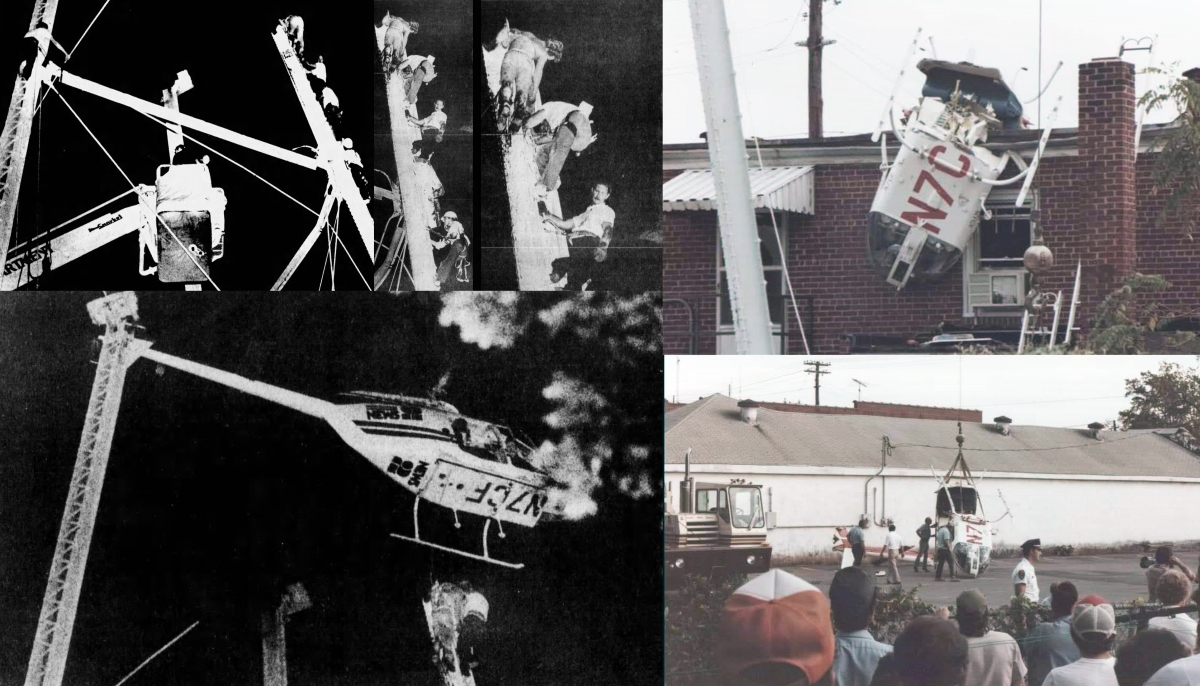
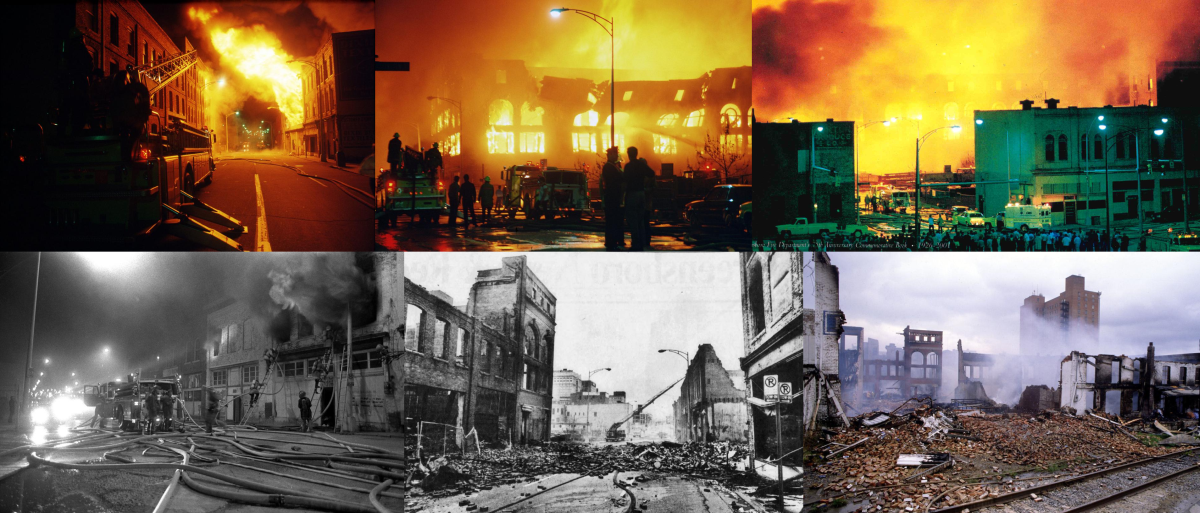 Joseph Rodriguez / Greensboro News and Record photos
Joseph Rodriguez / Greensboro News and Record photos
